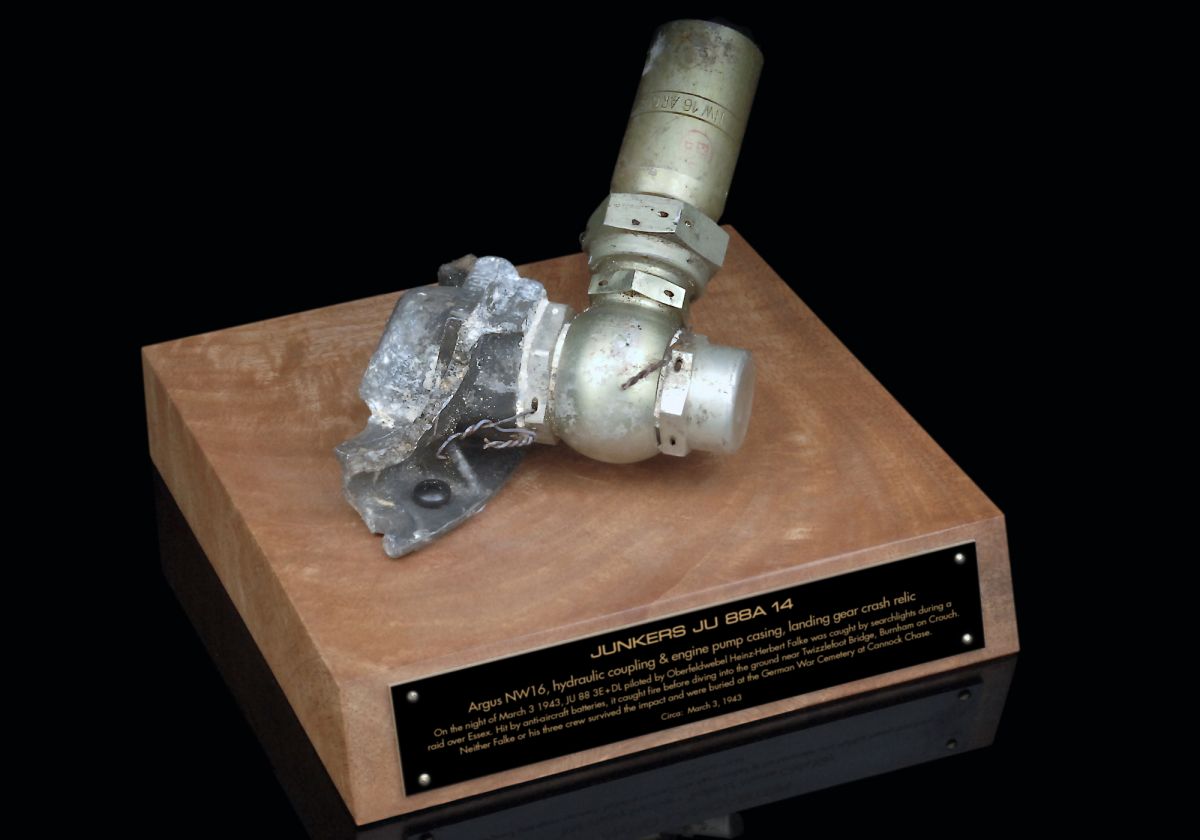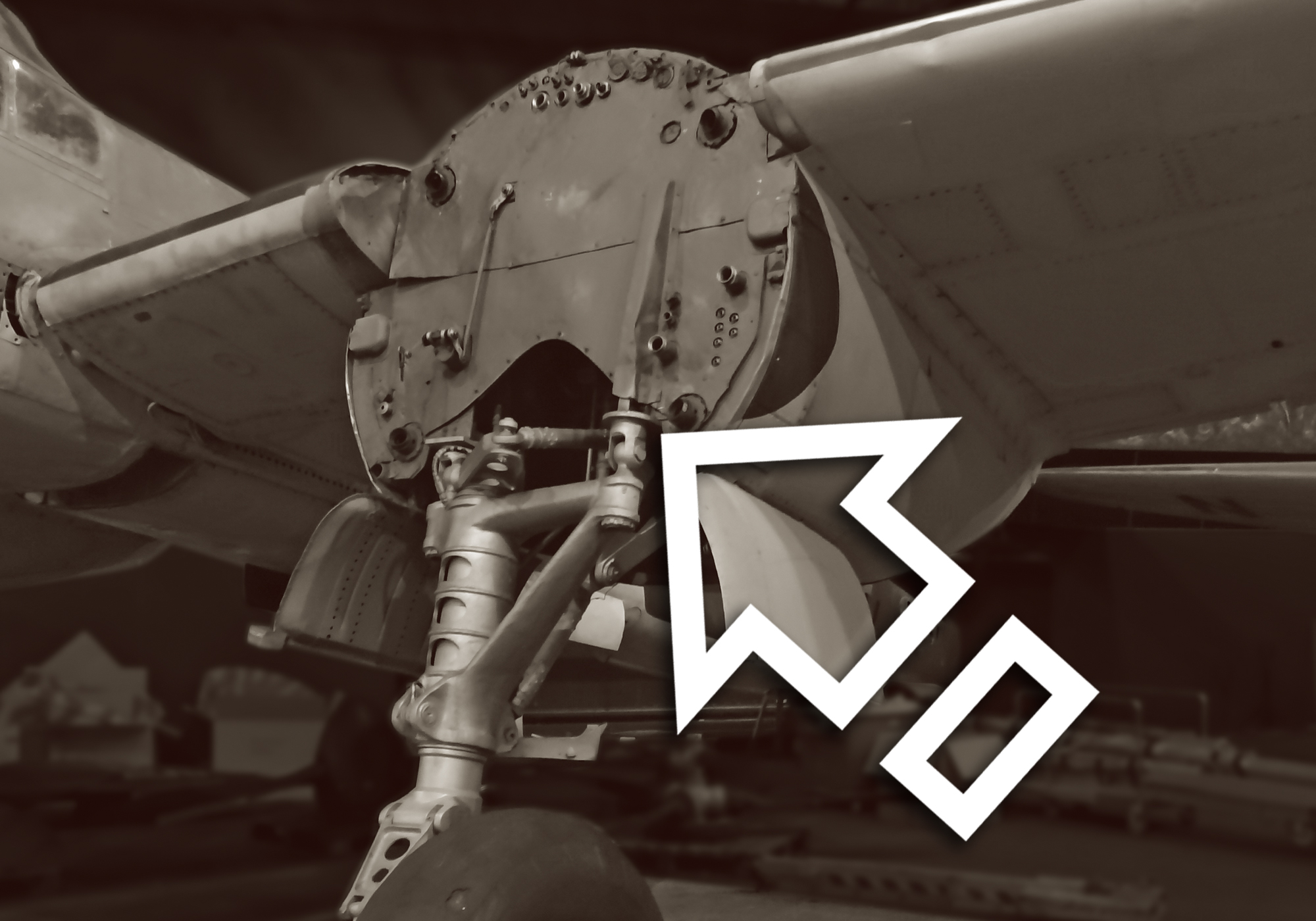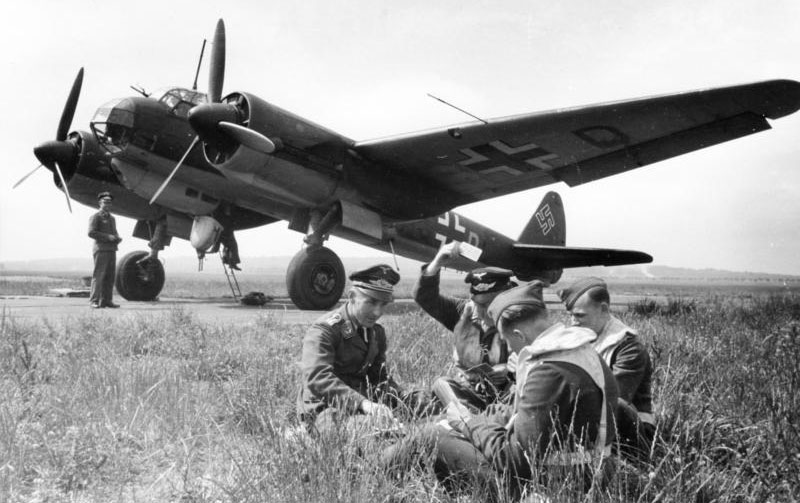- AUST POST SHIPPING
- 0438 654 235
- info@recoverycurios.com
- P.O. Box 7640 Cairns QLD Australia, 4870
-
0
Shopping Cart

JUNKERS JU 88, 3E+DL ARGUS NW16 HYDRAULIC LANDING GEAR COUPLING
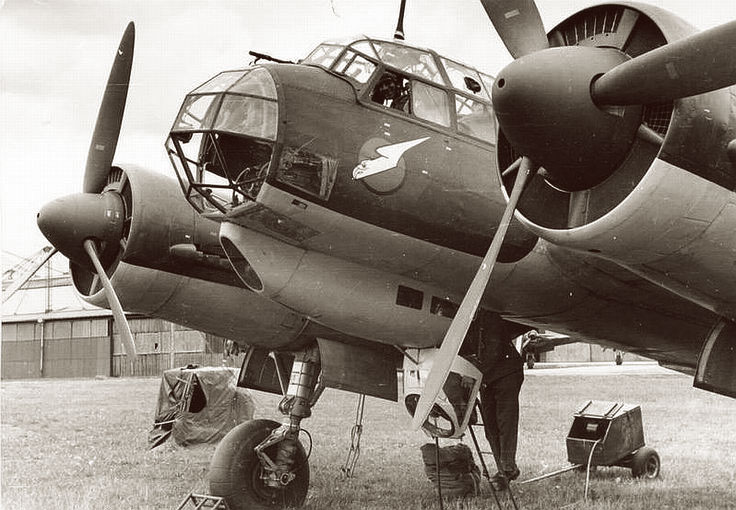 Kampfgeschwader 6 (KG6 Bomber Wing) was a specialised bomber wing established to target key British industrial targets and command and communication bases.
Kampfgeschwader 6 (KG6 Bomber Wing) was a specialised bomber wing established to target key British industrial targets and command and communication bases.
Formed in late 1942 and equipped with Dornier Do 217, Ju 188 and Ju 88 bombers, KG6 was split into three Staffens (bomber groups) and saw action over Britain, across the Eastern Front, North Africa and the Mediterranean before converting to night fighter operations over Germany in early 1945.
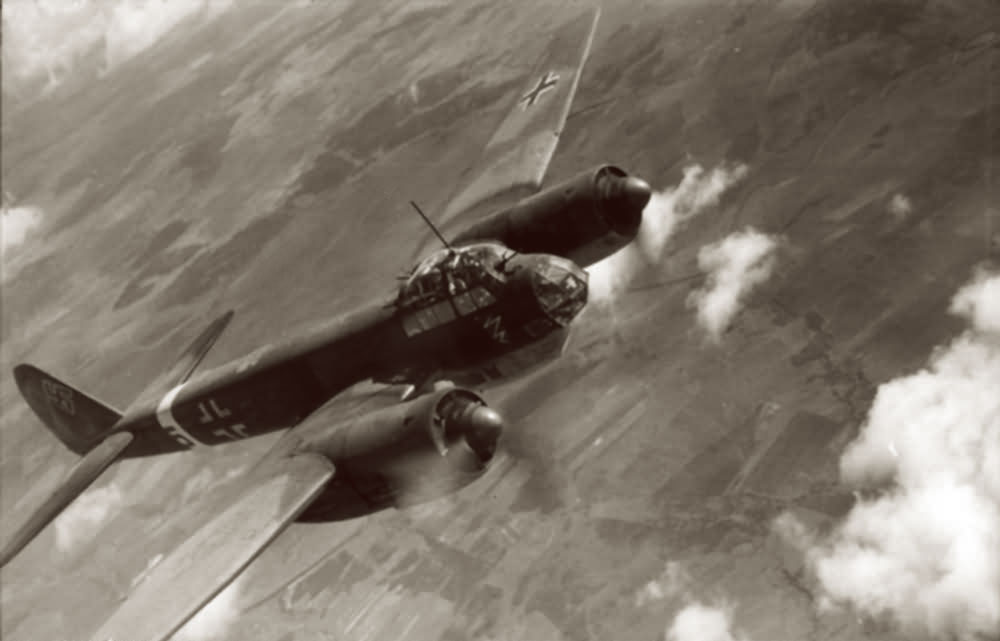 Even though the more streamlined JU 88 was faster and more manoeuvrable than the Dornier and Heinkel bombers, it suffered significant losses during the day light bombing raids of the Battle of Britain. Unlike the Heinkel, early models carried only one rear mounted and one forward facing machine gun leaving it reliant on the Luftwaffe’s Messerschmitt BF 109 fighter escorts for protection.
Even though the more streamlined JU 88 was faster and more manoeuvrable than the Dornier and Heinkel bombers, it suffered significant losses during the day light bombing raids of the Battle of Britain. Unlike the Heinkel, early models carried only one rear mounted and one forward facing machine gun leaving it reliant on the Luftwaffe’s Messerschmitt BF 109 fighter escorts for protection.
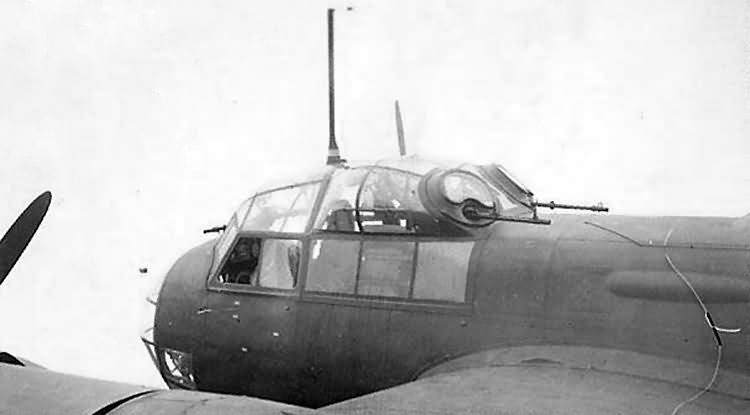 Unfortunately the limited range of the Bf 109 resulted in the bomber convoys being left exposed to the RAF’s Hurricane and Spitfires and later models of the JU 88 had their armament upgraded to include two rear facing cockpit machine guns
Unfortunately the limited range of the Bf 109 resulted in the bomber convoys being left exposed to the RAF’s Hurricane and Spitfires and later models of the JU 88 had their armament upgraded to include two rear facing cockpit machine guns 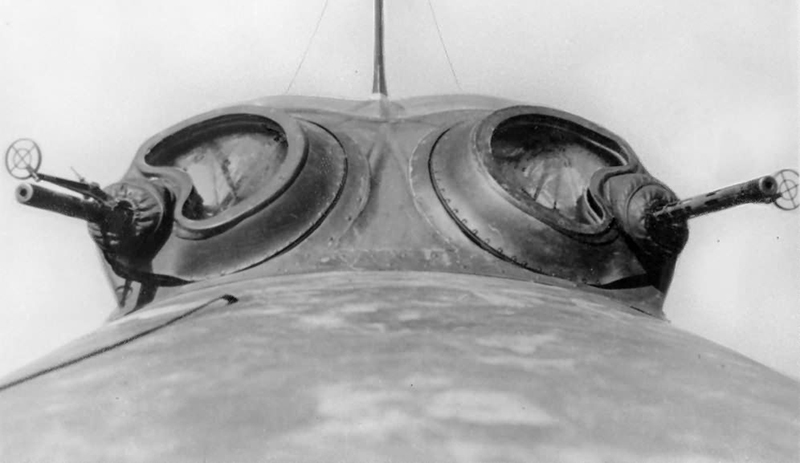 plus a rear facing belly gun to compliment the forward facing gun.
plus a rear facing belly gun to compliment the forward facing gun.
Ju 88 losses far exceeded those of the Dornier and Heinkel, loosing 303 aircraft between July and October 1940. Dornier and Heinkel losses for the same period were 132 and 252 machines destroyed, respectively. As a result, the JU 88’s cockpit armour 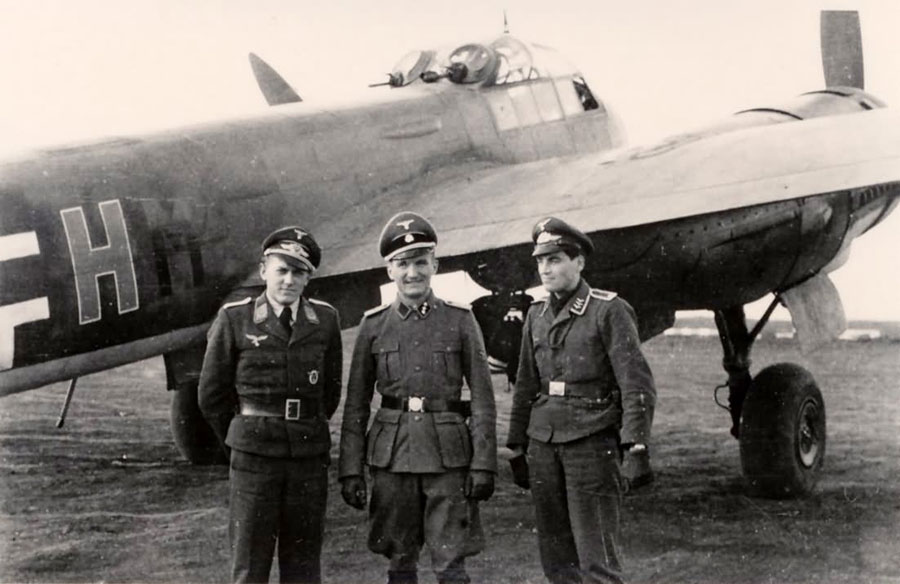 was also upgraded to provide better protection for its four man crew.
was also upgraded to provide better protection for its four man crew.
After the Luftwaffe’s failure to secure the skies over Britain, KG6’s three Staffens were dispersed to the Eastern Front, North Africa and the Mediterranean in support of ground troop operations but found them selves back over Britain in 1943 after Hitler ordered reprisal raids in response to the RAF’s bombing of Germany.
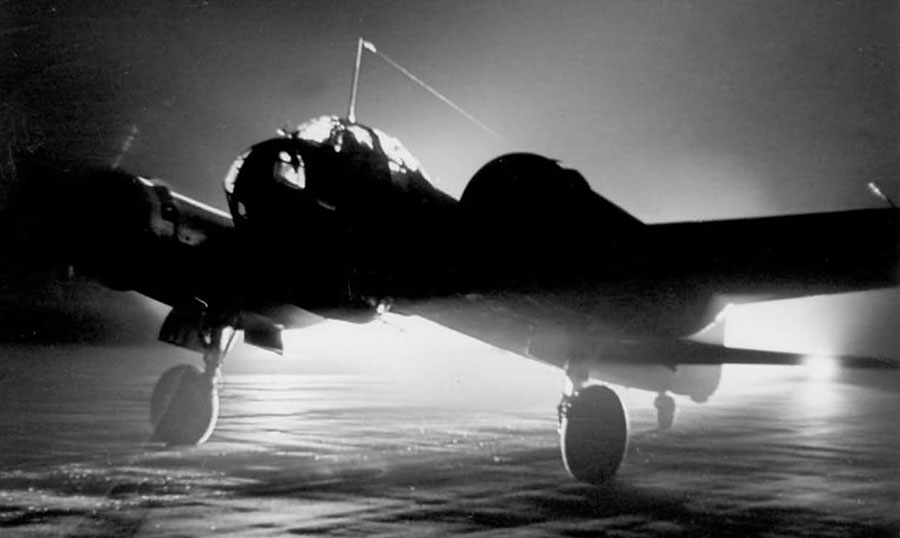 KG6’s night-time tactical bombing campaign against British industrial targets began shortly after its formation and continued well into 1943 with attacks by all three Groupens with III KG6 targeting factories in Hull and Exeter in early January 1943 as well as supporting the main bomber groups targeting London, Norwich and Birmingham with some elements heading further afield to attack Newcastle, Sunderland and even Edinburgh in the North East.
KG6’s night-time tactical bombing campaign against British industrial targets began shortly after its formation and continued well into 1943 with attacks by all three Groupens with III KG6 targeting factories in Hull and Exeter in early January 1943 as well as supporting the main bomber groups targeting London, Norwich and Birmingham with some elements heading further afield to attack Newcastle, Sunderland and even Edinburgh in the North East.
Unlike the endless waves of bombers used in the Luftwaffe’s Blitz of Britain in 1940/1941, KG6 missions usually consisted of only a handful of bombers with the lead aircraft marking the target with incendiaries much the same as the RAF’s Pathfinder Aircraft.
Their smaller numbers made interception by RAF night fighters extremely difficult although the Luftwaffe pilots still ran the gauntlet of Britain's coordinated system of radar and searchlight enabled anti-aircraft batteries.
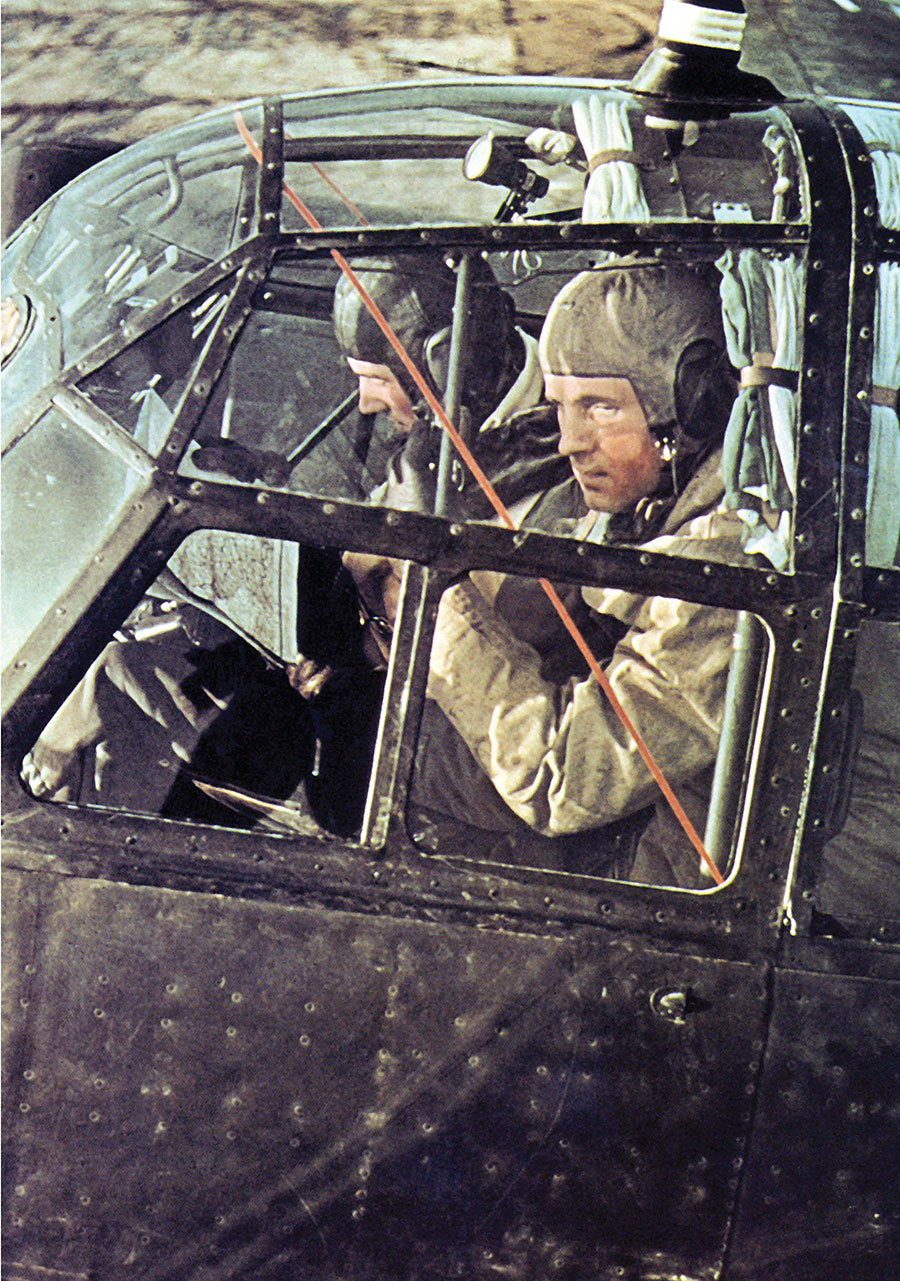
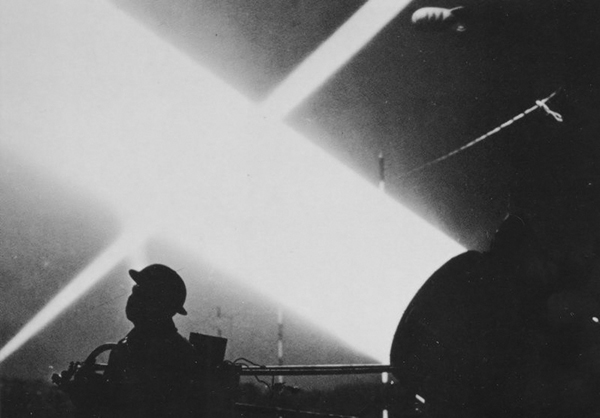 For all bomber pilots and crew, both German and Allied, being caught in the glare of searchlights on a bombing raid was a terrifying experience which forced the pilot to immediately wrench his aircraft out of the searchlight stream and back into the safety of the darkness.
For all bomber pilots and crew, both German and Allied, being caught in the glare of searchlights on a bombing raid was a terrifying experience which forced the pilot to immediately wrench his aircraft out of the searchlight stream and back into the safety of the darkness.
Some aircrew were successful in escaping the glare of the searchlights and its following anti-aircraft fire but others were not so lucky.
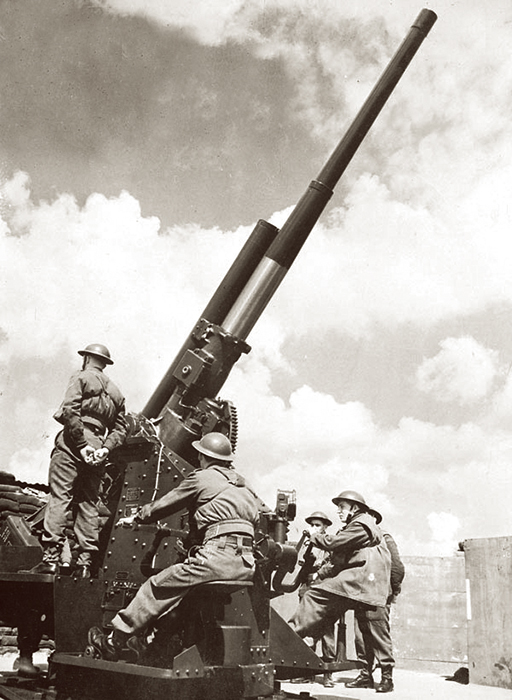 One such aircraft was JU 88 3E + DL piloted by 30 yr old Oberfeldwebel (Flight Sergeant) Heinz-Herbert Falke of the III./KG6 Kampfgeschwader. He was accompanied by his flight crew consisting of: Observer: 21 yr old Unteroffizier (No Commissioned Officer) Hans-Erich Laube; Wireless Operator 33 yr old Obergefreiter (Corporal) Egon-Frtz Kock and Air Gunner 19 year old, Obergefreiter (Corporal) Walter Uhlir
One such aircraft was JU 88 3E + DL piloted by 30 yr old Oberfeldwebel (Flight Sergeant) Heinz-Herbert Falke of the III./KG6 Kampfgeschwader. He was accompanied by his flight crew consisting of: Observer: 21 yr old Unteroffizier (No Commissioned Officer) Hans-Erich Laube; Wireless Operator 33 yr old Obergefreiter (Corporal) Egon-Frtz Kock and Air Gunner 19 year old, Obergefreiter (Corporal) Walter Uhlir
 Returning from their raid over Exeter, Falke’s JU 88 ran straight into the deadly searchlight beam of a local anti-aircraft battery and its powerful QF 3.7 inch anti-aircraft guns.
Returning from their raid over Exeter, Falke’s JU 88 ran straight into the deadly searchlight beam of a local anti-aircraft battery and its powerful QF 3.7 inch anti-aircraft guns.
The British auto-loading anti-aircraft gun could fire up to 19 x 28 lb shells to a height in excess of 35,000 ft every minute.
Falke’s aircraft received a direct hit and burst into flames before diving straight into the ground near Twizzlefoot Bridge, Burnham on Crouch with no survivors.
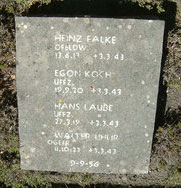 The bodies of Oberfeldwebel Heinz-Herbert Falke and his three crew were recovered a couple of days later, receiving full military honours and laid to rest at what is now, the German military Cemetery at Cannock Chase.
The bodies of Oberfeldwebel Heinz-Herbert Falke and his three crew were recovered a couple of days later, receiving full military honours and laid to rest at what is now, the German military Cemetery at Cannock Chase.
 The JU 88 buried had itself deep into the Exeter ground and after an initial surface assessment by the regional RAF Intelligence/Recovery team, the wreckage lay buried until the mid 80s when a local aviation archeology group mounted a two field surveys and excavations.
The JU 88 buried had itself deep into the Exeter ground and after an initial surface assessment by the regional RAF Intelligence/Recovery team, the wreckage lay buried until the mid 80s when a local aviation archeology group mounted a two field surveys and excavations.
What they found was remarkable with both of the JU 88’s engines being recovered, as well as wing spars, fuselage sections, mangled framing together with two rear facing machine guns and both main landing gear struts.
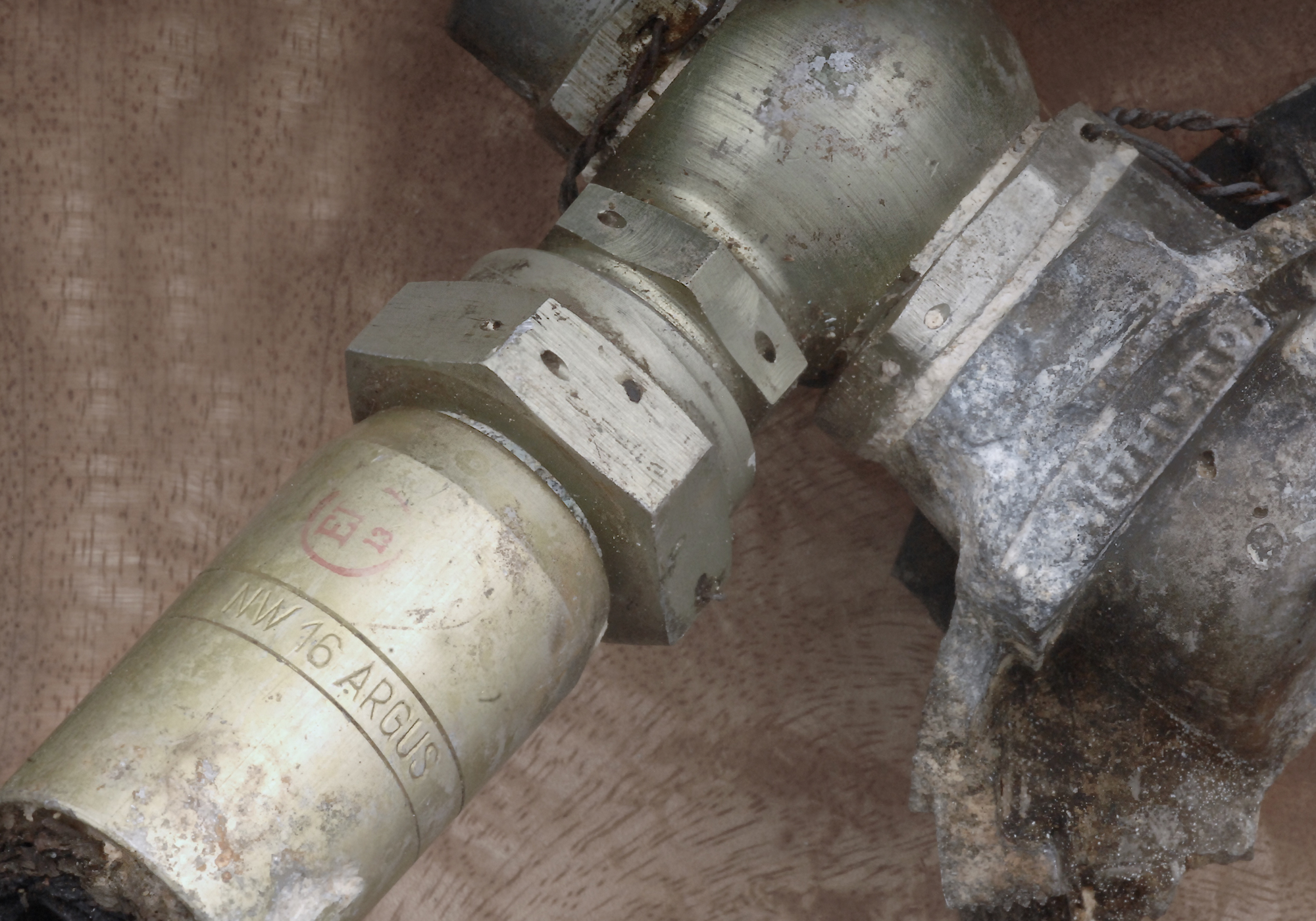 Whilst some major pieces were put on local display, many of the JU88’s recovered pieces went into private collections such as this complete Argus NW16 double flange adapter, hydraulic coupling and pump casing remnant was also recovered with the landing gear strut.
Whilst some major pieces were put on local display, many of the JU88’s recovered pieces went into private collections such as this complete Argus NW16 double flange adapter, hydraulic coupling and pump casing remnant was also recovered with the landing gear strut.
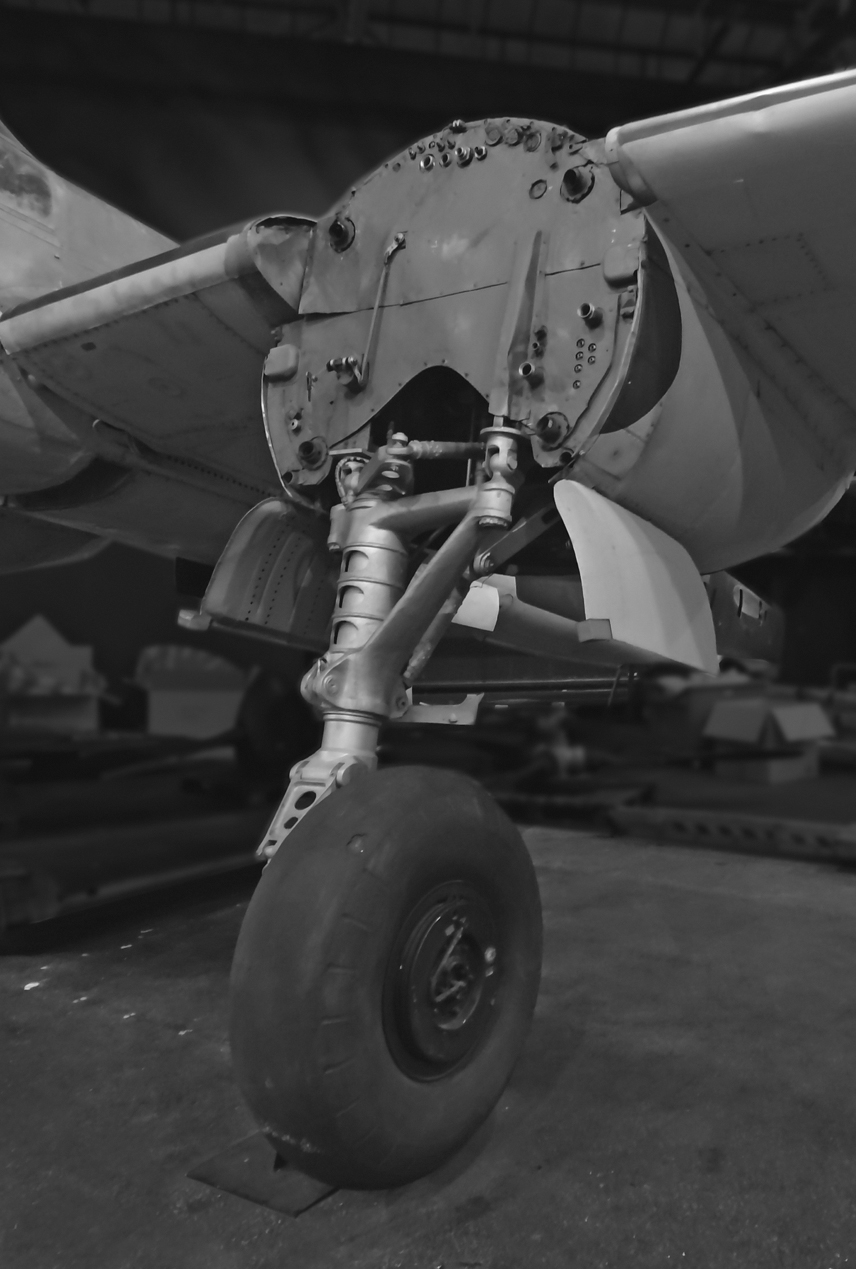 The original JU 88 prototype had been designed with a conventional operating dual Strut rear-wards retracting main gear, but the production models introduced a new main gear design that twisted the single strut through 90° during retraction - much like the USAAF Curtiss P-40 Warhawk.
The original JU 88 prototype had been designed with a conventional operating dual Strut rear-wards retracting main gear, but the production models introduced a new main gear design that twisted the single strut through 90° during retraction - much like the USAAF Curtiss P-40 Warhawk.
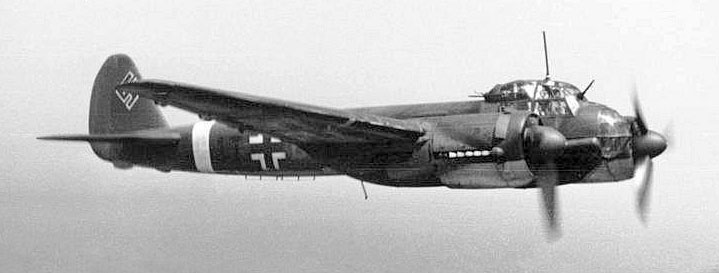 The feature allowed the main wheels to return above the lower end of the strut when fully retracted enabling the landing gear wing pod to be thinner and more streamlined.
The feature allowed the main wheels to return above the lower end of the strut when fully retracted enabling the landing gear wing pod to be thinner and more streamlined.
The streamlining was also helped with the fitting of conical spring washers for main gear suspension rather than the traditional and bulkier ‘piston arm’. The Belleville ‘spring-type’ Washer could take extreme loading along its axis both statically and dynamically, requiring a relatively small installation space.
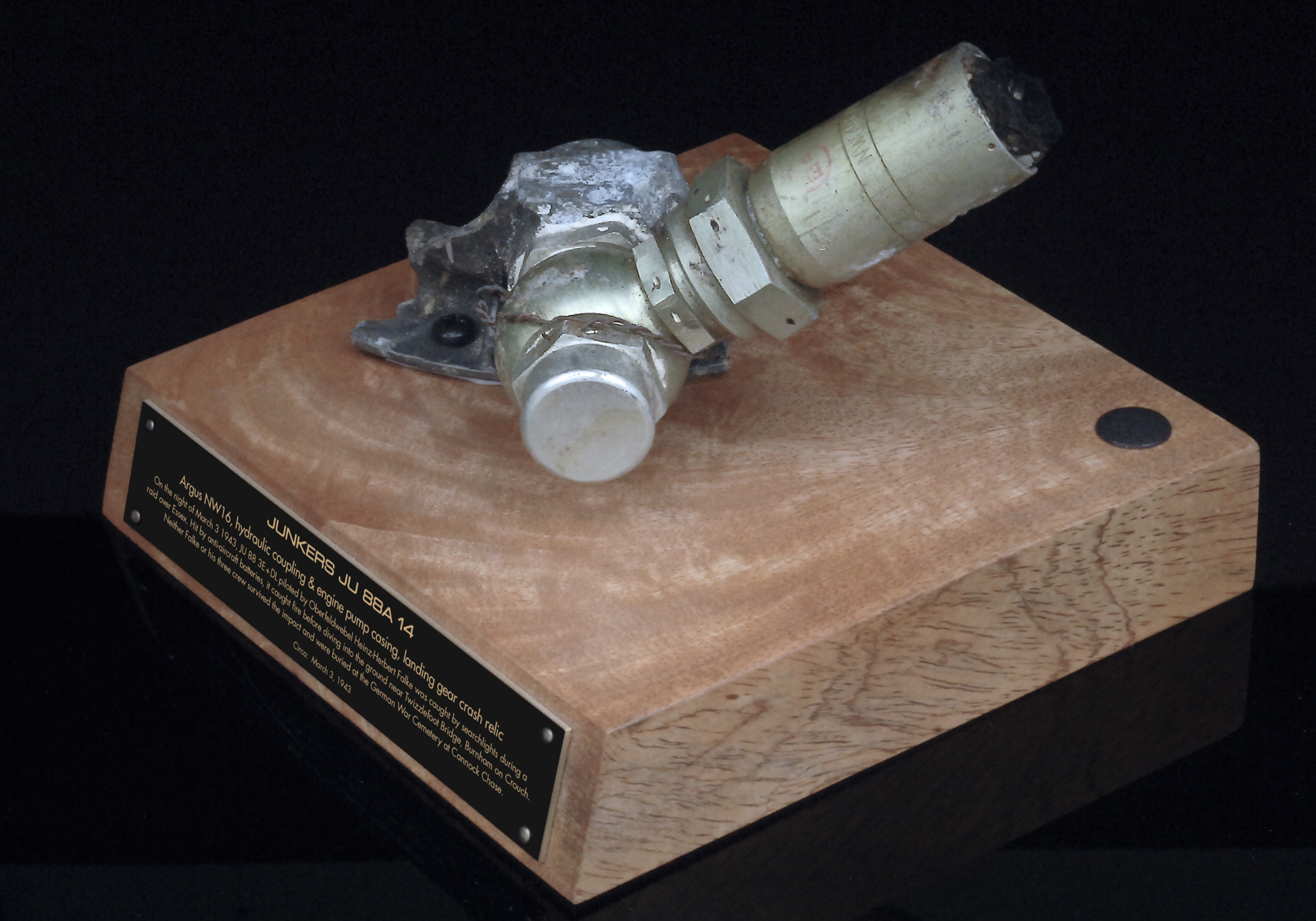 The JU 88’s wheel gear was operated by two hydraulic pumps powered by its twin Jumo 211 J-2 1,050 kW engines. This Recovery Curios JU 88 artefact is a remnant of that hydraulic gear retraction unit and was found next to one of the main landing struts have=ing been broken off on impact.
The JU 88’s wheel gear was operated by two hydraulic pumps powered by its twin Jumo 211 J-2 1,050 kW engines. This Recovery Curios JU 88 artefact is a remnant of that hydraulic gear retraction unit and was found next to one of the main landing struts have=ing been broken off on impact.
Argus was a German engineering company founded in 1936 which specialised in producing hydraulic hoses and couplings for the the Luftwaffe and this coupling still has its Argus NW/16 markings clearly marked with the partially erased ‘Juno’ markings on the pump casing.
This original Luftwaffe artefact comes mounted on its 100 yr mango wood display stand with engraved plaque and an awesomely detailed 1/72 or larger 1/48 scale custom built  model of this key Luftwaffe bomber mounted above on its magnetic stand. A double sided, laminated detailed Fact Sheet is also supplied featuring details of Falke's JU 88 and the hydraulic coupling making this the perfect gift for any pilot or aviation enthusiast.
model of this key Luftwaffe bomber mounted above on its magnetic stand. A double sided, laminated detailed Fact Sheet is also supplied featuring details of Falke's JU 88 and the hydraulic coupling making this the perfect gift for any pilot or aviation enthusiast.
This Junkers 88 Collectable comes complete with detailed 1/72 or 1/48 Scale Model, Mango Wood Stand & Plaque plus Printed Fact Sheet featuring photo of instrument in aircraft cockpit.
Your JU-88 3E+DL landing gear hydraulic coupling, Original Recovery Curios Warbird Collectable includes:
- Original Warbird instrument
- Highly detailed hand-built and airbrushed 1/72 plastic scale model of the aircraft,* or 1/48 scale super detailed model
- Hand-crafted and beautifully finished 100yr, Far North Queensland Mango Wood display stand
- Detailed, 2-sided, printed and laminated Instrument Fact Sheet detailing aircraft and instrument
- Removable Magnetic Display Arm
*An upgrade to the larger and more detailed 1/48 scale model is also available in the hand-built and airbrushed plastic version for an additional $65 (Click on the 1/48 scale option)
Both the 1/72 & 1/48 scale hand-built and airbrushed plastic models are available with 'wheels & flaps up or down' and options.
Upon order placement you will receive an email asking for your preferred configuration.
Your complete Recovery Curios Original Instrument Collectable is securely packed and delivery normally takes between 6 - 8 weeks approx.
Did you fly, crew or maintain a JU-88 or have a friend, colleague or family member who did? Check out our PERSONALISED ORIGINAL INSTRUMENT COLLECTABLE OPTION here.
- LAND
- SEA
- AIR
- VINTAGE ORIGINAL AIRCRAFT INSTRUMENTS
- HAWKER TYPHOON
- VICKERS WELLINGTON
- FAIREY GANNET
- RYAN ST-A SPORTS TRAINER
- DE HAVILLAND TIGER MOTH
- HAWKER HUNTER
- Mc DONNELL DOUGLAS KC-10 AERIAL TANKER
- SOPWITH CAMEL
- AIRCO DH.1 AND DH.2
- JUNKERS JU 87
- CURTISS C-46 COMMANDO
- HANDLEY PAGE HAMPDEN
- SUPERMARINE SEAFIRE
- B-25 MITCHELL BOMBER
- BRISTOL BLENHEIM
- ENGLISH ELECTRIC LIGHTNING
- HAWKER TEMPEST MkVI
- YAKOVELOV YAK - 3
- FOCKE-WULF FW190
- FOLLAND GNAT
- AIRSPEED OXFORD
- SHORT STIRLING
- AVRO ANSON
- DOUGLAS C-133 CARGOMASTER
- HANDLEY PAGE VICTOR BOMBER
- DE HAVILLAND SEA VENOM
- VICKERS VALIANT BOMBER
- DOUGLAS A-26 INVADER
- GRUMMAN S2F TRACKER
- SUPERMARINE SPITFIRE
- LOCKHEED P2-V NEPTUNE
- P-51 MUSTANG
- BRISTOL BEAUFIGHTER
- DE HAVILLAND MOSQUITO
- B-26 MARTIN MARAUDER
- P3 ORION
- DOUGLAS A-20 HAVOC
- P-39 AIRACOBRA
- AVRO SHACKLETON
- B-17 FLYING FORTRESS
- B-24 LIBERATOR
- MESSERSCHMITT BF-110
- MESSERSCHMITT BF-109
- BRISTOL BEAUFORT
- KAWASAKI Ki-45 (NICK) INTERCEPTOR
- C-130 HERCULES
- CAC BOOMERANG
- AVRO LANCASTER
- GRUMMAN F4F WILDCAT
- F4U VOUGHT CORSAIR
- WESTLAND LYSANDER
- P-47 REPUBLIC THUNDERBOLT
- NORTH AMERICAN T-6 TEXAN - HAVARD
- C-47 SKYTRAIN
- DOUGLAS SBD DAUNTLESS
- CAC WIRRAWAY
- PBY CATALINA
- P-40 WARHAWK
- FAIREY SWORDFISH
- P-38 LIGHTNING
- HAWKER HURRICANE
- CURTISS SB2C HELLDIVER
- GRUMMAN F6F HELLCAT
- SEAKING HELICOPTER
- SEAHAWK HELICOPTER
- DOUGLAS A4G SKYHAWK
- GRUMMAN TBF AVENGER
- HANDLEY PAGE HALIFAX
- DOUGLAS SKYRAIDER AE-1
- GLOSTER METEOR
- JUNKERS JU-88
- F-86 SABRE JET
- SHORT SUNDERLAND
- B-29 SUPER FORTRESS
- F-9F GRUMMAN PANTHER
- F-100D SUPER SABRE
- BELL UH-1 HUEY HELICOPTER
- AVRO VULCAN STRATEGIC BOMBER
- CANBERRA BOMBER
- DHC-4 CARIBOU
- BLACKBURN BUCCANEER
- DE HAVILLAND VAMPIRE JET
- HAWKER SEA FURY
- LOCKHEED HUDSON
- LOCKHEED EC-121 WARNING STAR
- SEPECAT JAGUAR
- HAWKER SIDDELEY NIMROD
- HAWKER SIDDELEY HARRIER
- ARADO AR 196
- VOUGHT OS2U KINGFISHER
- LOCKHEED ELECTRA
- NORTHROP P-61 BLACK WIDOW
- BOEING CH-47 CHINOOK
- LOCKHEED PV-1 VENTURA
- BOEING P26-A 'PEASHOOTER'
- Ilyushin Il-2 ‘Sturmovik’
- WESTLAND WESSEX
- FAIREY FIREFLY
- VINTAGE AVIATION COLLECTABLES
- VINTAGE COLLECTABLE MODEL AIRCRAFT KITS
- RETRO STYLE METAL AIRCRAFT COLLECTABLES
- VINTAGE ORIGINAL AIRCRAFT INSTRUMENTS
